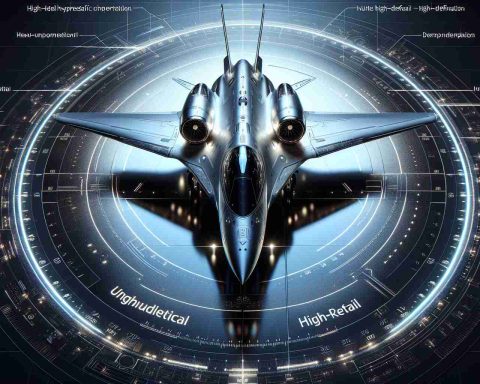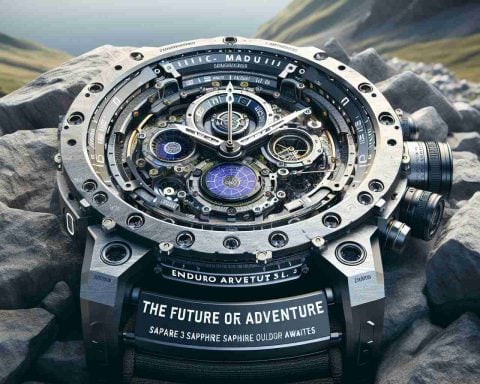Russia boasts one of the most robust air power capabilities in the world, featuring a diverse array of combat aircraft designed for various strategic roles. At the core of this formidable fleet are jets produced by Sukhoi and Mikoyan, which include advanced multi-role fighters and heavy bombers.
Among the latest innovations in Russia’s arsenal is the Su-57 Felon. This fifth-generation fighter jet incorporates state-of-the-art stealth technology and avionics, enabling it to compete with leading American fighters. The Su-57 is equipped with powerful engines that propel it to speeds exceeding 1,600 mph, allowing it to engage in both air superiority and ground attack missions effectively.
In addition to the Su-57, the Russian Air Force relies heavily on established models such as the Sukhoi Su-27, Su-30, and Su-35, which are capable of exceeding Mach 2. These jets carry out critical multi-role functions essential for operational success.
For long-range offensive capabilities, Russia employs strategic bombers like the Tu-160 Blackjack and Tu-95 Bear, designed for nuclear and conventional missions. Their versatility is evidenced in their use for tactical strikes.
Russia’s aerial combat power culminates in advanced helicopters and interceptors like the Mig-31 Foxhound, showcasing a comprehensive approach to air defense and assault strategies. This extensive and sophisticated inventory underscores Russia’s commitment to maintaining a significant presence in global military dynamics.
Russia’s Air Power: Implications on Global Stability and Security
The vast and sophisticated air power capabilities displayed by Russia hold significant implications for the lives of people, communities, and entire nations. Russia’s extensive inventory of advanced military aircraft not only affects its own national security but also poses concerns for international stability, geopolitical tensions, and global peace.
Increased Tensions and Fear: The modernized Russian air force, highlighted by cutting-edge jets like the Su-57 Felon, significantly raises tensions in Eastern Europe and other regions. As these advanced military assets bolster Russia’s ability to conduct rapid and powerful aerial operations, neighboring countries find themselves reevaluating their defense strategies. Nations such as Poland, the Baltic states, and Ukraine are now more anxious about potential incursions, which can lead to military buildups and increased defense spending.
The Impact on NATO and Alliances: Russia’s military advancements prompt responses from NATO and its member countries. The alliance has increased its presence in Eastern Europe through enhanced air patrols and military exercises. This reaction creates a cycle of escalation, as both sides feel compelled to showcase their military strength, which could potentially lead to misunderstandings or miscalculations that might escalate into conflict.
Economic Implications: The investment in advanced military technology doesn’t come without a financial cost. Significant resources are devoted to research and development within Russia’s defense sector, which could be alternatively allocated to socio-economic development programs such as education and healthcare. The prioritization of military spending has sparked domestic controversies, especially in light of economic challenges faced by everyday citizens.
Global Arms Race: Russia’s advancements in air power contribute to a broader international arms race, as other countries seek to enhance their air combat capabilities. The emergence of stealth technologies and sophisticated avionics in Russian aircraft prompts nations like the United States, China, and India to accelerate their own defense innovations. This scenario raises concerns about global stability as nations prioritize military advancements over diplomatic engagements aimed at reducing tensions.
Humanitarian Perspectives: The presence of advanced military aircraft can have grave humanitarian implications. Regions affected by military conflicts, such as Syria, have witnessed the use of air power in devastating ways. Civilian populations are often caught in the crossfire, leading to loss of life and displacement. The humanitarian crisis requires attention and action, highlighting the need for dialogue and conflict resolution rather than military escalation.
Interesting Facts and Controversies:
– The Su-57 Felon, the latest addition to Russia’s air force, had its operational capacity limited due to delays in production and technological challenges, making it the center of controversy among defense analysts.
– The Tu-160 Blackjack is known for its speed and ability to carry nuclear weapons, which raises fears of nuclear proliferation and the re-emergence of Cold War-era tensions.
– The visibility of military drills near NATO borders has led to accusations of war-mongering from both sides, impacting diplomatic relations and public sentiment.
As the dynamics of air power evolve, the challenges and consequences of these advancements ripple through global society, influencing not only military strategies but also the daily lives of millions across various nations. The urge to ensure national security often conflicts with the need for peace and stability, creating a complex web of relationships that impacts global geopolitics today.
For further exploration of defense issues, you can visit Defense.gov for insights into military strategies and international relations.
The article has been updated: 2024-11-06 02:54
Here are some suggested related links for the post title “Overview of Russia’s Air Power”:
1. Military.com – A comprehensive resource for news and information on military capabilities, including air power analysis and updates on Russia’s military developments.
2. U.S. Department of Defense – The official website of the U.S. Defense Department, offering insights into global military strategies and air force operations, including assessments of foreign air capabilities.
3. Army Times – Provides the latest news and expert analysis on military issues, including the air power of nations like Russia, with in-depth articles and reports.
4. U.S. Air Force – The official site of the U.S. Air Force, featuring resources on air power, aircraft capabilities, and relevant international military comparisons.
5. Royal United Services Institute (RUSI) – A leading defense and security think tank that offers research, analysis, and commentary on military developments, including Russia’s air capabilities.
6. Defense News – A trusted source for defense and military news, covering various aspects of military power worldwide, including features on Russia’s air force.
7. GlobalSecurity.org – An extensive resource for military information, including detailed information on Russia’s military capabilities and air power.
8. Aviation Week Network – Provides in-depth coverage of the aviation sector, including military aviation insights and reports on Russian air force developments.
9. Jane’s Information Group – A leading source of defense and security information, offering analysis on military capabilities including air power assessments for global forces.
10. NATO – The North Atlantic Treaty Organization’s official site, featuring reports and assessments on member and partner nations’ military capabilities, including Russia’s air force.
The article has been updated: 2024-11-06 15:18
What are the key components and capabilities of Russia’s air power?
Russia’s air power is characterized by a diverse range of components and capabilities, including a modern fleet of combat aircraft, advanced air defense systems, and an extensive logistics network. Key components include:
1. Combat Aircraft: Russia operates a variety of fighter jets such as the Sukhoi Su-57, Su-35, and Mikoyan MiG-29, which are designed for air superiority, multirole operations, and ground attack. The air force also includes bombers like the Tupolev Tu-160 and Tu-95, capable of strategic long-range missions.
2. Helicopters: The Russian military employs a range of attack and transport helicopters, including the Mil Mi-24 and Kamov Ka-52, which provide close air support and troop transport capabilities.
3. Air Defense Systems: Russia possesses advanced air defense systems such as the S-400 and S-500, which can engage a wide spectrum of aerial threats, including aircraft and ballistic missiles, making its airspace heavily defended.
4. Logistics and Support: A robust logistics and support infrastructure ensures that Russian air power can maintain operations over long distances and support rapid deployment. This includes air refueling capabilities and maintenance units.
5. Emerging Technologies: Russia is actively developing next-generation systems, including unmanned aerial vehicles (UAVs) and hypersonic weapons, to enhance its air power capabilities further.
Overall, Russia’s air power is a crucial element of its military strategy, enabling it to project power, conduct complex operations, and defend its national interests.

















